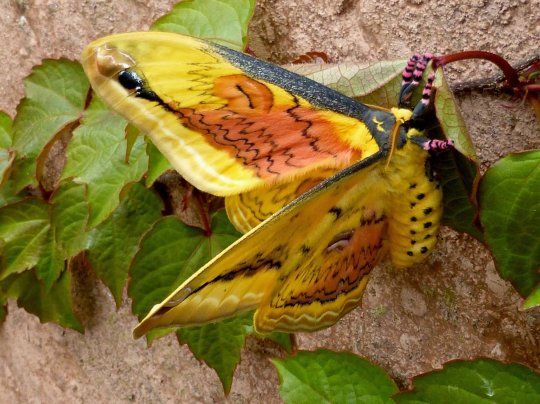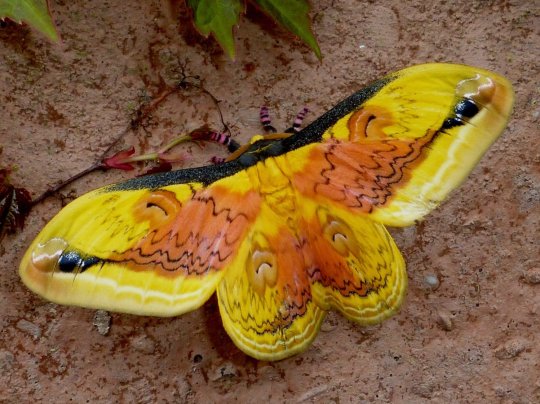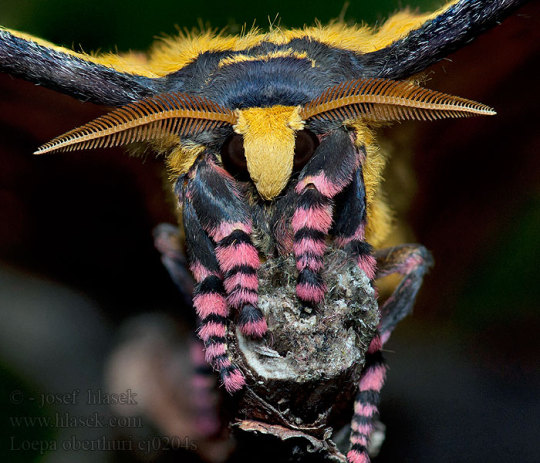Text
A new study suggests that Anna's Hummingbirds in the western United States are not only keeping up with human influence on their habitat, they're thriving. According to a recent study in Global Change Biology, a journal focused on environmental change, the use and prevalence of hummingbird feeders — like those red and clear plastic ones filled with homemade sugar water — changed the size and shape of the birds' beaks. The range of the hummingbird also spread from the southern part of California all the way up the West coast into Canada.
Continue Reading.
3K notes
·
View notes
Text




Puma or Cougar or Mountain Lion (Puma concolor), LEUCISTIC, family Felidae, Serra dos Órgãos National Park, Brazil
photos via: Lucas Gonçalves da Silva
8K notes
·
View notes
Text

Osmia orientalis is apparently a bee that will use a old snail shell as a nursery c:
4K notes
·
View notes
Text

Brilliant Carpenter-Bee Mimic Hawk Moth (Sataspes tagalica), family Sphingidae, Chiang Dao, Thailand
photograph by Antonio Giudici
3K notes
·
View notes
Text
PARTIAL DIPROSOPUS MENTION!!??????
OMG OMG OMG OMG OMG


everyone please look at this cat my brother found in the philippines - he's got 2(two) noses!
11K notes
·
View notes
Photo



White Spotting in European Red Foxes
Here’s another weird color mutation I’ve been finding examples of recently. The top fox was killed in the UK, while the bottom two were killed in the Netherlands as part of an unrelated research project.
Unfortunately, I haven’t been able to find out any more information about it, other then this spotting appears to be common in foxes in the South Limburg region of the Netherlands, (suggesting it’s genetic and not a random mutation.)
Clearly it’s a less dramatic form of leucisum, but if anyone has anymore info/pictures of this mutation then please let me know! I’m really fascinated by the variation in color of both wild and captive-bred foxes.
Photos by magman, (top), and J.L.Mulder, (bottom)
2K notes
·
View notes
Text
Loepa oberthuri



Loepa oberthuri - Oberthur's emperor
Family: Saturniidae
It has pink feet!!
13K notes
·
View notes
Text


happy valentine’s day here r some bug valentines i found
706 notes
·
View notes
Text


Tiny friend! Juvenile green anole skull. Tied with western skink for smallest in my collection.
161 notes
·
View notes
Text
For your reading pleasure: an iNaturalist forum thread about how dandelion taxonomy is so fucked up that no researcher wants to even touch it
10K notes
·
View notes
Text
Good morning, Scientists think they finally found a newborn great white shark and I cannot stress enough how amazing this is!!!!

The white film covering its body is believed to be intrauterine substances still adhered to the body. Now, it is possible that this is actually not a pup but a smaller great white with a skin condition, but considering its size… It’s gotta be a wee little baby white shark, right??? Gosh, I really hope so!!!
Here is the published article!
15 notes
·
View notes
Text
Just so we’re clear, there’s no such thing as an albino peafowl/peacock/peahen. No record of any actually albino peafowl exists. Every single white peacock you’ve all ever seen is leucistic, not albino. Sit down and let me teach you about peafowl genetics.
Albinism is (basically) an inability to produce melanin (black and brown pigment) in any part of their body, including their eyes.. Albino animals have pigment cells, but they do not produce the pigment. Their irises look red because they lack pigment; the red coloration is instead due to blood cell coloration.
Leucism is a genetic condition which causes pigment cells to fail to migrate from the neural crest during development. Leucistic animals can produce pigment, but they lack the cells necessary to deposit it onto feathers/fur/scales. Unlike an albino, however, leucistic animals have colored irises; in the case of peafowl, their eyes are blue, not red like an albino’s look:

Image Source: (x).
A white peafowl carries two copies of the white [total leucism] gene (WW). Breeding a white bird to a blue bird will not produce pied birds (birds with some white patches), it will instead produce a blue bird carrying 1 white gene (giving it a white throat patch and white primary wing feathers).
A pied peafowl carries 1 copy of the white [total leucism] gene (W) and one copy of the pied (partial leucism) gene (p). A (Wp) genotype results in a colored bird with white patches on its body (the amount of white varies per bird, with “loud pied” indicating a genetically pied bird with lots of white), like so:

Image source: (x)
There is also a third leucistic gene found in peafowl called White Eye (We) which turns all of the eyes in their train feathers white instead of blue/green/brown/black. White eye birds look like this:

Image Source: (x)
Interestingly, there is a genetic mutation called Silver Pied which is a combination of white, pied, and white-eye. This particular genetic combination produces a mostly white bird with patches of color, like so:

Image Source: (x)
Anyway, that’s your lesson in peafowl genetics for the day. Now we can all stop automatically calling every white animal an albino, and instead we can stop and ask ourselves “is this really, or is it leucistic?” Quickest way to tell: look at the eyes. if they’re dark or solidly blue, that sucker likely isn’t an albino at all.
5K notes
·
View notes










